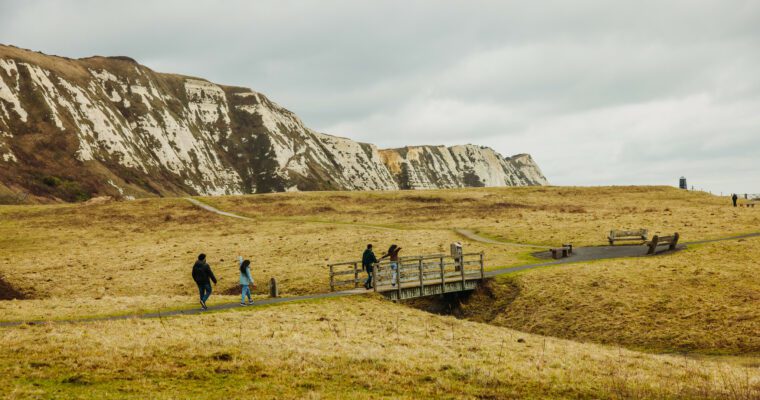Folkestone Museum
Folkestone sits close to the middle of the Cross-Channel Geopark, and its coastal location has given rise to a rich history.
Folkestone Museum
Folkestone sits close to the middle of the Cross-Channel Geopark, and its coastal location has given rise to a rich history including some of the earliest geological studies, a Roman villa, and the first attempts to dig a tunnel under the Channel. The Folkestone Museum is the perfect place to discover this history, with collections including ancient quern stones linked to the beginning of Cross-Channel trade, Roman tiles and other artefacts and the maritime history of the town, which has been defined by its proximity to France.
Perhaps the most impressive collection of all at Folkestone Museum is the natural history collection.
Many of the most extraordinary fossils that have been found along the Folkestone coastline over hundreds of years can be discovered at the museum, alongside extraordinary collections of butterflies and moths. The very first Folkestone Museum, opened in 1858, was actually based upon the huge collection of fossils that local resident Samuel Mackie had built up, much of which is still on display today.
About Geosites
Geosites are sites of geological interest across the aspiring UNESCO Cross-Channel Global Geopark, where people can visit and interact with our geological heritage. This wide range of sites will offer varying opportunities and values including cultural, heritage, scientific, educational, and aesthetic.


About the aspiring UNESCO Cross-Channel Global Geopark
Hundreds of thousands of years ago a catastrophic flood swept away the chalk ridge connecting Dover and Calais, carving out the white cliffs of Dover and starting Britain’s history as an island.
Did you know the Kent and French coasts are actually still connected today by the layer of chalk which runs below the Channel?
In celebration of the chalk and the channel, we are working to secure UNESCO Cross-Channel Global Geopark status for the Kent Downs National Landscape together with our neighbouring protected landscape in France; the Parc Naturel Regional des Caps et Marais d’Opale.
The Geopark will include both the protected landscapes and the Channel connecting them, recognising and celebrating the geological connection between us.



















